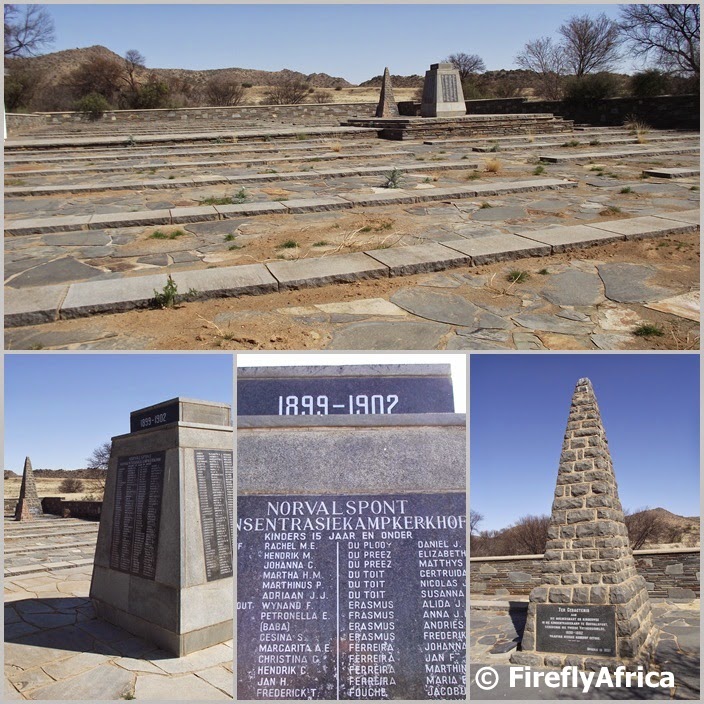The Anglo Boer War (1899 – 1902) is one of the big turning points in South Africa’s history along with the arrival of Europeans in the country, the Great Trek, the Apartheid years and a new democratic South Africa. Okay, so the history is about more than just those five turning points but that is what came to my mind just now. One of the most significant things that happened during the Anglo Boar War was that it was the first time ever that concentration camps were used anywhere in the world. During the war thousands of men, women and children were kept in these camps with 4 177 boer women, 22 074 children under sixteen and 1 676 boer men dying in these camps. That’s not even counting the over 14000 deaths in black concentration camps.
A couple of years back we spent a holiday at the Gariep Dam and I read about Norvalspont where one of these concentration camps we situated. I never got a chance to visit the site but driving back from Johannesburg recently I decided to make a stop on my way back towards the coast. The turnoff was on my route and after about 2 kilometers on a smooth dirt road I came across the site. No magnificent monument, no fancy visitor centre, no guides hanging around to show visitors around and no tourist trap curio and food stalls. In actual fact, there wasn’t another soul in sight. Just a big paved area surrounded by a low stone wall and three stone monuments with plaques on them. From what I can gather its the site of the concentration camp’s cemetery.
Norvalspont was seen as a model camp and was much better off than most of the other camps even though conditions were still very bad. It was situated on the banks of the Orange River which meant that there was at least enough water and fire wood available. It was not that Norvals Pont lacked the problems of the other camps. On the contrary, the measles epidemic struck early and was followed by scarlet fever and diphtheria. Families also poured in without warning and tents and blankets often ran out. The camp was one of those visited by Emily Hobhouse in 1901. At times there were over three thousands people housed at Norvalspont, all housed in tents on the site, while the camp had a total of four hundred and twelve deaths.
Standing there on a warm winters afternoon without a breath of air moving and only cicadas calling it does become a bit of a profound experience. One where you realize how much sadness and despair there must have been right there yet there is also a spirit of strong and proud people who supported each other and stood together through this difficult time. A profound experience indeed.
For more information on the Norvalspont Concentration Camp have a look at
Anglo Boere Oorlog/Boer War (1899-1902) NORVALSPONT Camp/Kamp
and
Waschbank River Lodge

Thanks for sharing this, Jonker. I have a special interest in the Anglo Boer War. Even did my thesis on the POW camp in Greenpoint, where the stadium is now. Not many people know about it, thinking POWs were all sent to St Helena or Bermuda, etc. But Greenpoint was the place at the beginning of the war. It's so sad to see the same surname repeated two or three times for kids under 15 on the Norvalspont monument – very possibly kids from the same family. Hard to imagine what that must have felt like for their parents.
A good thing to reflect on this history.